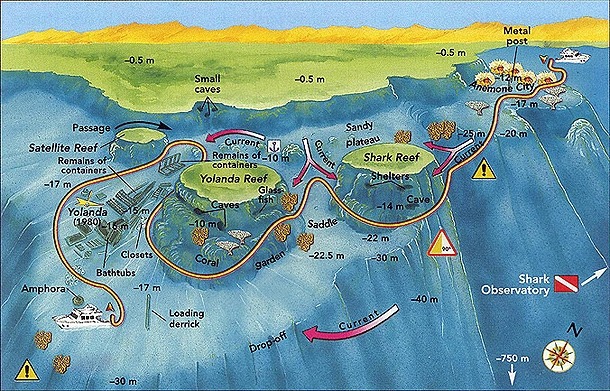ANEMONE CITY

The Anemone City dive site is an underwater terrace perched on the vertical wall in a few hundred meters north of Shark Reef. Hundreds of large anemones and colonies have given this site its name.
Anemone City is often seen as a simple entry point at the beginning of Shark Reef dive. In this case, you leave City and head into the blue water. Only after quite a few minutes of swimming "through the blue" do the outlines of the Shark Reef wall appear.
However, Anemone City deserves a separate dive. You will often encounter strong currents over the site. If the current is coming from Shark Reef, turn to the shore reef with your left shoulder and drift towards the Shark Observatory. You will definitely love vertical walls, cornices and crevices.
Shoals of pelagic fish cruise along the wall. And on the site itself, in addition to anemones, you might find turtles and leopard sharks.
The blue water around Anemone City is a place where all kinds of surprises are possible. The author of these lines has met whale sharks, manta rays and large eagle rays on numerous occasions. And sometimes even tiger sharks.
Leopard shark in Anemone City. The strongest current :-)
|

 Diving in Sharm el-Sheikh
Diving in Sharm el-Sheikh